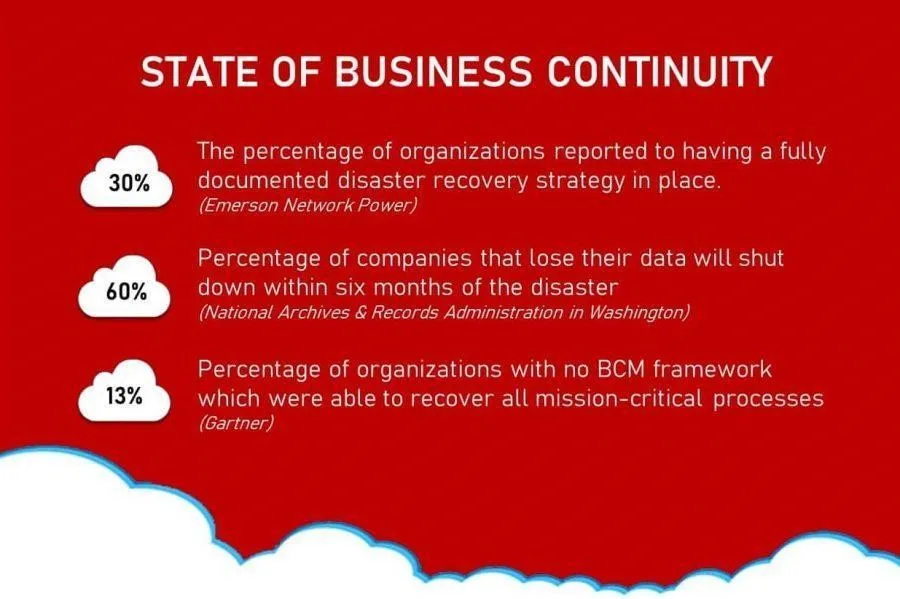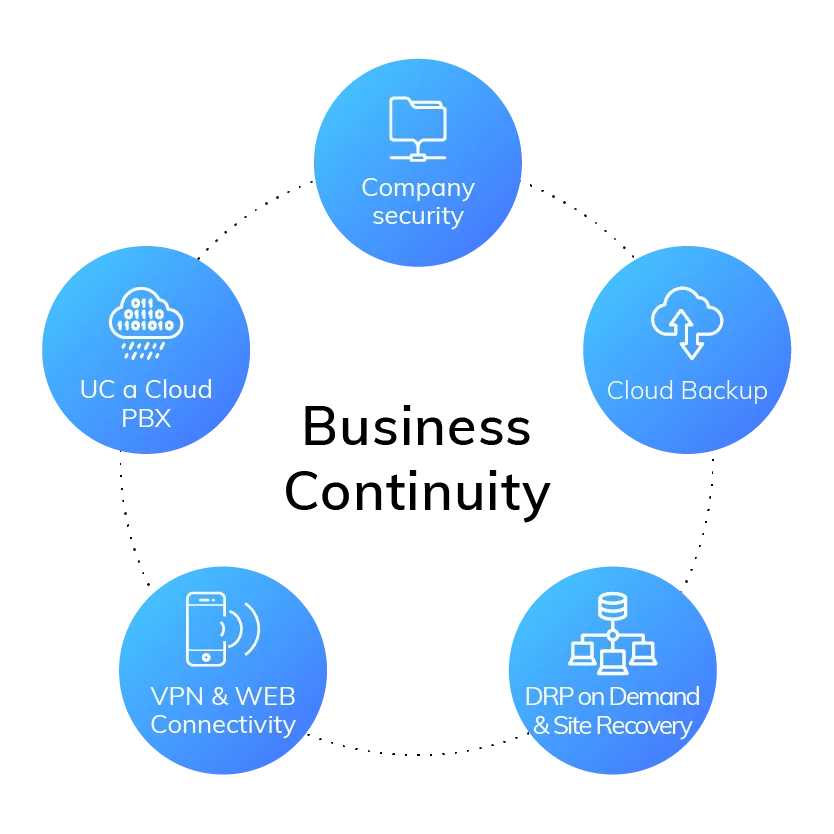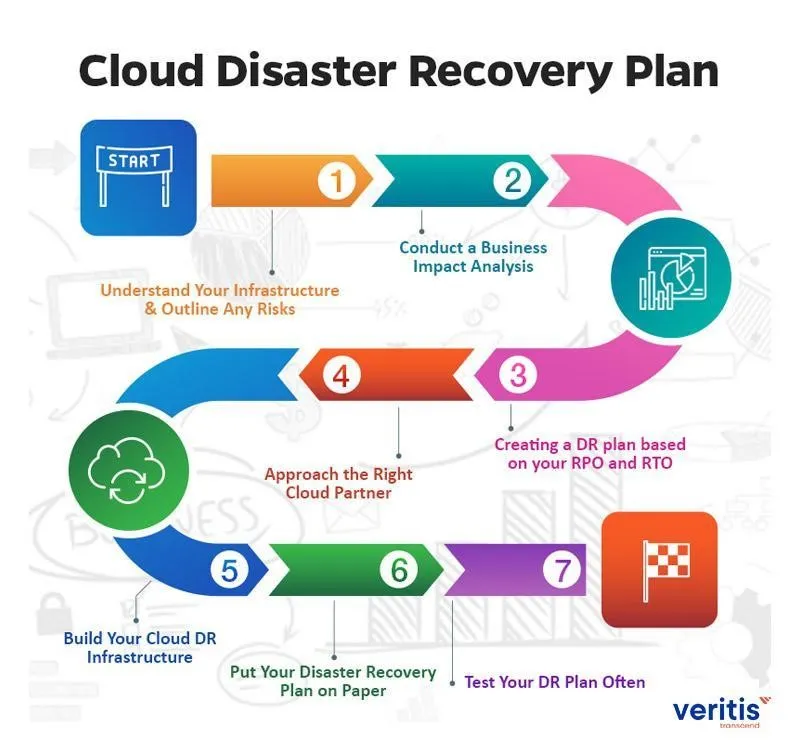IT leaders are constantly implementing new technologies that can drive their businesses forward while simultaneously securing their online network and critical business data. Businesses today can achieve continuity through cloud-based services across the globe, including in remote locations. During its inception, business continuity via the cloud was an expensive service, but with more and more cloud service providers entering the market, cloud-based businesses have become more affordable. Today, backing up data in the cloud has become the norm rather than a choice for businesses of all sizes.
Contents
What are Cloud Managed Services?
Cloud Managed services comprise data and programs that a cloud service provider hosts on servers located at a remote location. Users can access these resources via the Internet or the company network.
Cloud services may include databases, analytics, applications, servers, storage, and networking. Cloud-managed services are typically available on demand and can be increased in capacity if needed. The cloud is a vital part of business continuity for data-focused enterprises that cannot afford downtime. Cloud-managed services ensure constant information availability and quick and reliable support.

Fig. 1: Cloud Managed Services by Region
Image Credit: zsah.net
How can Cloud Services contribute to Business Continuity?
Cloud-managed services offer timely and error-free data recovery, which is essential for business continuity. The cloud is a seamless and secure alternative when employees cannot work out of their main offices. With cloud services, home offices, recovery sites, and satellite offices can continue to work as normal.
Traditional data recovery solutions take hours to transfer data from servers and on-premise storage to recovery hardware. Hence, the on-premise model could entirely stall a company’s functioning during a main server crash.
Moreover, cloud-managed services can help with business continuity in the following manner:
- Provides regular backup and failover equipment that takes up the work when the main server fails.
- Decreases downtime
- Offers improved management of network and information security
- Maintains important data on-premises and backs up the remainder to the cloud as needed to scale with the demands of the business.
- Helps reduce the impact of disruptions of services
- Eliminates the need to maintain an expensive mirror of your network infrastructure
- Reduces the need to sync software on multiple sites
- Reduces data recovery time substantially
- Eliminates the need for professionals to travel during unfavorable conditions.
In addition to the mentioned benefits, leveraging cloud-managed services also provides an additional layer of cloud security, which further enables business continuity. This enhanced security ensures the protection of critical data and mitigates the risk of cyber threats and breaches. By partnering with a trusted cloud service provider, businesses can benefit from advanced security measures such as encryption, access controls, and threat detection systems.

Fig. 2: State of Business Continuity
Image Credit: businesstechweekly.com
Why are Cloud-Managed Services Essential for Business Continuity?

Fig. 3: Business Continuity and the Cloud
Image credit: prodwaregroup.com
When it comes to risk and security management during unforeseen circumstances, keeping systems secure for businesses is a challenge. This is when organizations need to leverage cloud services to maintain business continuity. Here are some ways in which the cloud can help businesses maintain core business processes during any disruption:
- Increased Scalability and Operational Agility
The business continuity of organizations relies mainly on agility, as they must be flexible enough to adapt to market fluctuations and unexpected interruptions due to various reasons. Enterprises that are heavily dependent on data centers, legacy systems, and in-house networks are unlikely to achieve the required agility, as even a simple power or internet outage can cost them millions in unscheduled downtime.
Certain physical limitations must also be considered with expanding business operations, such as limited space for installing backup servers and network systems. Cloud-based services facilitate seamless backup and data recovery, reduce redundancies, and offer unlimited scalability.
With reduced dependency on physical infrastructure, organizations attain the flexibility to continue and scale their operations under any circumstances. Employees can work from home if they are unable to travel to their workplace. They can access data and apps or work online even if the network is down, and lost data can be quickly remedied by restoring from a cloud backup.
- Maximize Uptime
One of the primary goals of a business continuity plan is to maximize the availability of critical resources for optimal customer service and enable employees to deliver to the best of their abilities.
With managed cloud-based services, business continuity can be achieved by automatically and constantly replicating data systems. For instance, many cloud providers store data in multiple remote locations, with the nearest data center hosting your cloud-based data and apps. However, in the event of a service outage in the usual location, the cloud service can connect to another location with a real-time data copy.
A multi-cloud strategy with real-time copies of data stored across multiple cloud service providers makes it unaffected by the loss. A multi-cloud approach with a robust business continuity plan can significantly increase your chances of meeting your business objectives.
- Distribution of risk
Another great benefit of a managed cloud-based business continuity plan is that it allows businesses to distribute the risk in a way that does not fail internal networks. Since cloud providers are required to maintain a service level that includes service availability or “uptime,” there is a reduced risk of downtime and a guarantee of a robust emergency response system for companies.
- Cost-effective
They are ost-effective, even for small businesses. Every cloud managed service provider offers a range of services from which you can subscribe to those that best suit your business needs. You can customize your solution based on your business requirements and expansion.
- Easy data backup and restoration
With the cloud, disaster recovery is quicker and simpler. You can restore all main functions from the cloud. It is also more reliable than traditional data backup options such as tapes, drives, or disks that are highly prone to data corruption.
How to choose and implement the right cloud-based business continuity plan?
- Document all business tasks, processes, and activities
- Categorize all data systems, network infrastructure, and applications based on priority
- Compare all cloud-based service solutions on a cost vs. benefit basis
- Test the chosen cloud-based service on all probable scenarios before finalizing the deal
- Choose a cloud solution that handles data storage, then data backup/restore, and finally manages disaster recovery.
- Choose to automate the solution to the greatest possible level.

Fig. 4: Cloud Disaster Recovery Plan
Image Credit: veritis.com
Conclusion
More and more businesses are moving towards the cloud for the protection of their mission-critical data from threats and unscheduled downtime. Deploying cloud-managed services that focus on the goals of a business continuity plan can help them enhance their revenue, reduce risk, and maintain their brand equity. Reliable providers like STL Global Services offer scalable, cost-effective cloud solutions that facilitate seamless data backup and recovery. By partnering with STL Global Services, organizations can ensure minimized downtime, enhanced network security, and the maintenance of their operations regardless of physical or technological challenges.
FAQs
A company’s critical functions, key products and services, risks, and response plan are the main elements of a business continuity plan. The plan also outlines disaster response strategies and recovery procedures. Additionally, it defines roles and responsibilities, communication plans for stakeholders, and a plan for training and plan testing to ensure effectiveness.
Key threats to business continuity can vary widely depending on the nature of a business and its operational context. However, common threats include financial constraints, which can hinder operations; cyberattacks that can compromise sensitive data and disrupt operations; and project risks, such as unmet deadlines or budget overruns.
The main impact of cloud services on business continuity is regular data backup, which facilitates quick disaster recovery. This allows companies to maintain access to crucial data and applications even during a disaster or system failure. Furthermore, cloud services can also offer more flexibility, scalability, and cost-effectiveness than traditional disaster recovery methods.
Organizations can ensure business continuity with managed cloud services by leveraging the inherent scalability, redundancy, and disaster recovery capabilities of the cloud. A reliable managed cloud services provider, can help implement robust disaster recovery plans, achieve high availability through distributed workloads, and benefit from proactive monitoring and maintenance to minimize downtime and ensure uninterrupted operations.















